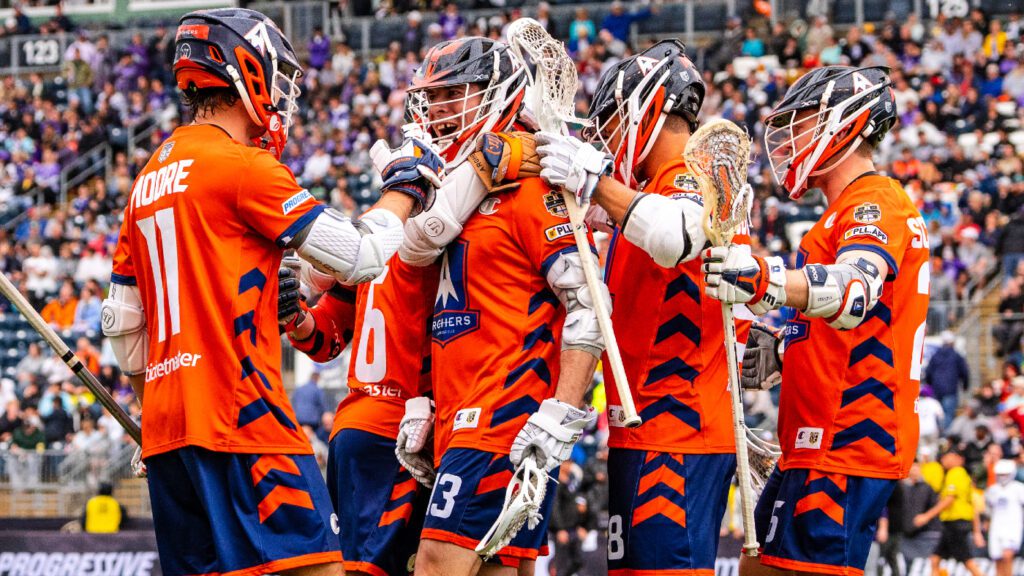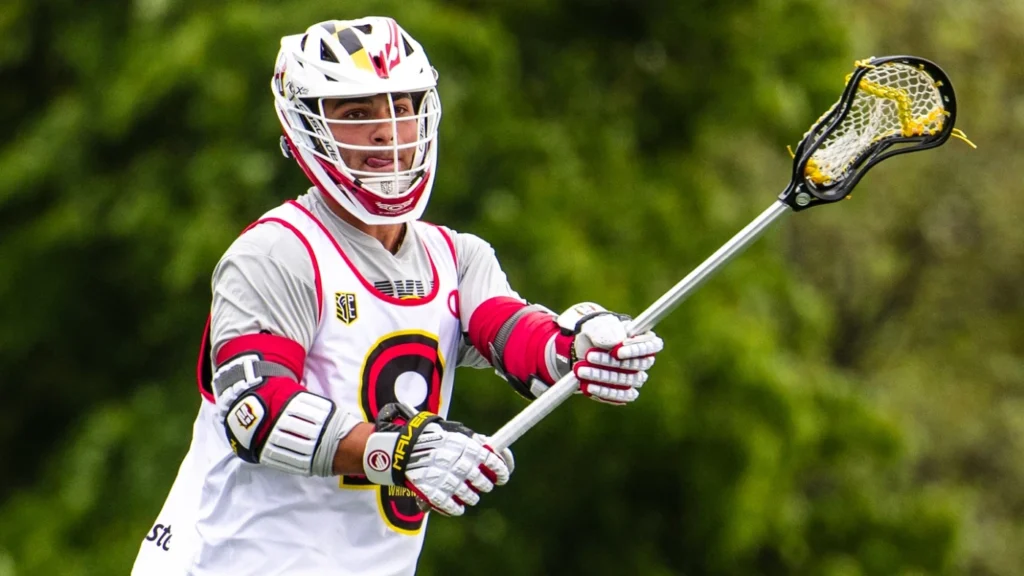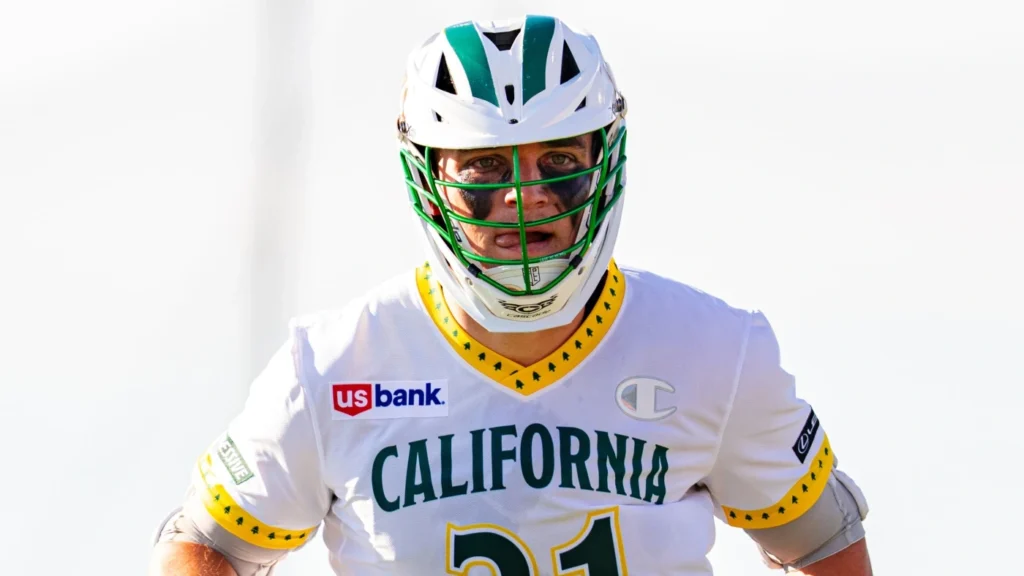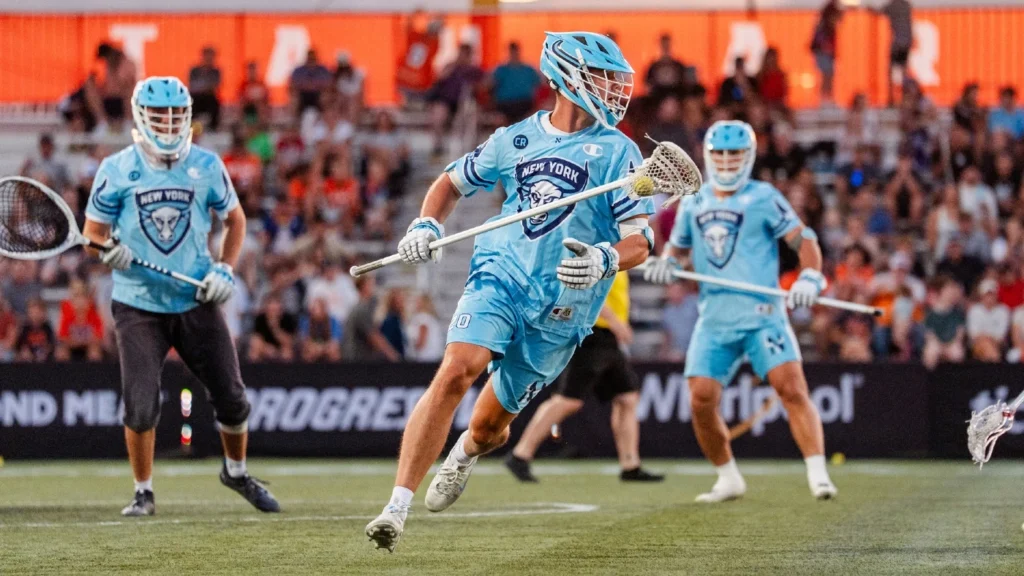
How the Archers have built a roster to win now and later
By Zach Carey | May 22, 2024
Utah Archers head coach and general manager Chris Bates has been on a heater over the last 18 months.
The club took a risk last offseason by letting club stalwarts Marcus Holman, Will Manny and Adam Ghitelman go in free agency. It also had to account for the retirements of perennial All-Pros Scott Ratliff and Dominique Alexander. That all came after three consecutive years of playoff disappointment.
Mac O’Keefe and Challen Rogers were the Archers’ answers via free agency. Faith in Brett Dobson, Connor Fields and Warren Jeffrey provided in-house solutions. Then the club prioritized its biggest needs in the draft by picking up Mike Sisselberger, Connor Maher, Piper Bond and Cam Wyers.
Every single one of those decisions paid off in a major way during the 2023 title run.
O’Keefe finished second in the PLL in scoring points with 30 (22G, 4T). Fields’ 39 points were the third-most in the league. Dobson finished second in saves (123) and third in save percentage (58%), was an Oren Lyons Goalie of the Year Award finalist and was the Championship MVP. Sisselberger’s 68.1% faceoff win rate was second only to Trevor Baptiste. Jeffrey was a lockdown cover defender alongside Graeme Hossack.
Bond allowed a minuscule 13.2% shooting percentage as the closest defender. Maher made the championship-sealing dive out and was stellar for a rookie SSDM. Wyers played a major role following Jon Robbins’ season-ending injury. He played out of position at long-stick midfielder but fit in better than expected for a fourth-round pick. Rogers didn’t have the offensive output the club would’ve expected — he scored four points in eight games – but his versatility was critical as he bumped down to play SSDM in the playoffs. He even spent the second half of the title game playing pole after Wyers went down.
Those performances were all individually spectacular. But part of what allowed the club to put all the pieces together was that those guys outperformed their contracts.
Dobson, Sisselberger, Maher, Bond and Wyers were all on rookie deals which slated them at bargain rates given their contributions. So was All-Star Matt Moore and valuable depth pieces including Robbins, Ryan Aughavin and Justin Inacio. Meanwhile, Fields and O’Keefe each signed with the Archers after down years with the Carolina Chaos. Their value in 2023 far exceeded their previous performance.
Heading into 2024, Bates and his staff have appropriately responded to last season's success. They’ve put the club in a position to chase another championship this summer and stay in the mix long term. That started with extending six core players to deals spanning through 2026 or longer: Dobson (through 2027), O’Keefe, Fields, Tom Schreiber, Tre Leclaire and Latrell Harris. All six of them would’ve been free agents after 2024.
“We come off a year where everybody believes in each other,” Bates said. “Obviously we had success. So [we’re] keeping the band together and keeping young, dedicated, talented players in our organization and not having them hit the open market. It’s just peace of mind knowing that you can draft and build around guys that you know are going to be there and then add the necessary pieces as you go forward.”
From a salary management perspective, locking down those six elite talents provides a string of benefits for the Archers. First, as Bates alluded to, it means they don’t hit the open market, so there aren’t deals to negotiate against.
It also allows the club to have a better picture of its cap situation in 2025 and beyond. At the beginning of 2024, 13 regular members of the club’s 19-man roster had contracts that expired at the end of the year. That number is now down to six.
It means if the cap does go up, Utah will be ahead of the curve. In that case, the extensions made this offseason will be at a cheaper rate relative to the deals in future seasons.
The extensions also provide a sense of comfort for everyone involved.
“If you can do it ahead of time and give them some peace of mind … it’s like anything else,” Bates said. “If you’re in the last year of your contract, maybe you press a little bit. There’s always that open-ended question. Potentially, you get more out of a guy if he knows you're committed to him and he’s not a free agent — that he’s dialed in as a core member and leadership can evolve [from that] as a result as well.”
Five of the six players that Utah extended are 28 years old or younger. The Archers have doubled down on talented players who are in their physical prime.
Of course, the one player who doesn’t fit the 28-or-younger mold is Schreiber, the three-time outdoor MVP. The 32-year-old is approaching the twilight of his career. But, after a 37-point regular season and an all-time championship performance, there’s no reason to suspect he’ll slow down in the next three years.
With those six locked down, a reinvestment in the draft was a logical next step. Looking ahead, Utah won't be able to keep all its players on the same money they were paid in 2023. That was likely a factor in trading Jared Conners for the 13th overall pick in the 2024 College Draft. He would’ve been due a hefty new contract at the end of 2024. If the Archers didn’t believe they could afford to re-sign him, getting that pick in return for the last year of his contract makes a lot more sense.
Armed with four selections in the first three rounds of a loaded draft, Utah picked its way through its pre-draft checklist. A top defensive prospect with close/LSM versatility? Enter Mason Woodward at eighth overall. An elite SSDM who can fill in for Harris and be another valuable piece on a rookie deal? There’s Beau Pederson at 13th. A lefty offensive threat to provide depth and make an impact without the ball in his stick? Hello, Dyson Williams at 16th.
With those three picks, the Archers got the three guys they believed to be their best options at each position of need. Then they took Towson’s Colby Barsz 24th overall to add more competition among their poles in training camp.
That said, there was some general surprise among the public about whom the Archers picked. Some questioned taking Woodward over Jake Piseno or Kenny Brower, Williams over TJ Malone or Payton Cormier and Barsz ahead of Roy Meyer or Tyler Carpenter.
“Honestly we rely on our relationships and our eyes,” Bates countered. “You realize that there is some of that luster or shine that the media puts on guys that might not be merited. A guy might be a really good college player, but you don’t see it translating to the pros. You don’t assume it. It’s our job to dig deeper and see who’s hungry, who’s a prospect and who’s gonna blossom. A college career is one thing, and a pro career is far different.”
Alongside Bates in the pre-draft evaluation process was Archers defensive coordinator Tony Resch. Resch has won 10 professional lacrosse championships across his nearly thirty years of pro coaching experience. Bates, Resch and assistant Brian Kavanagh knew what they were looking for when draft night came around.
“Coach Resch always reminds me of this: You gotta be special,” Bates said. “You have to be physically different. Whether it’s a special skill set or that you’re going to be able to adjust athletically to the next level, you don’t want to hope. You want to see it. You want to see that next-level jump. So you do your best to predict how it’s going to translate and what it’s going to look like.”
In Woodward, Pederson, Williams and Barsz, Utah picked four guys whom they think are special. With their last pick, Bates “channeled my [Philadelphia Eagles general manager] Howie Roseman a little bit” and traded it to the California Redwoods for a 2025 third-rounder.
Roseman is renowned for abusing opposing NFL GMs in trades. Roseman values future draft picks as equal to current picks, whereas the rest of the league undervalues them. A few weeks ago, Bates pulled a Roseman by flipping 32nd overall for a pick that could be as high as 17th and no lower than 24th next May.
“We felt like that third-round pick next year would have more value than the fourth-round pick this year,” Bates explained. “Maybe we can package that [in a trade] next year or maybe we can get value there. We know we’re not going to need a ton, so maybe we can create some draft capital and increase what value we have.”
Utah now heads to training camp with a high-octane offense, one of the best faceoff units in the league and a defense full of elite pieces and high-ceiling young guns. Just as importantly, the Archers could have as many as 10 players on their 19-man roster on rookie deals. A roster built around a core group of All-Pros and surrounded by a complement of good players on rookie deals is the ideal way to build a team in the PLL.
Utah has four of its top six offensive players signed through 2026, its top four SSDMs signed through at least 2025, its Championship MVP goalie locked down until 2027 and five picks in the 2025 College Draft. The Archers are the standard in the league right now because of the product they put on the field and because of how they’ve assembled their roster. There’s no sign that they’ll be relinquishing that title anytime soon.





